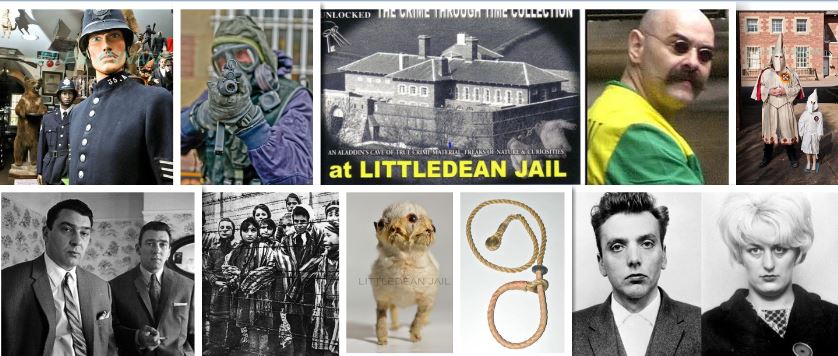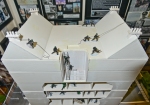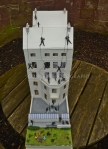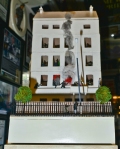


ORIGINAL 4 FT X 3 FT CANVAS OIL PAINTING INTERPRETATION OF THE IRANIAN EMBASSY SIEGE SAS FINAL ASSAULT ON MAY 5, 1980 ….PRIVATELY COMMISIONED BY THE CRIME THROUGH TIME MUSEUM FOR PERMANENT DISPLAY AT LITTLEDEAN JAIL . PAINTED BY GLOUCESTERSHIRE ARTIST PAUL BRIDGMAN .
ABOVE AND BELOW : PLEASE KINDLY NOTE BOTH THESE ORIGINAL PAINTINGS WERE COMMISSIONED BY AND REMAIN COPYRIGHT OF THE CRIME THROUGH TIME COLLECTION, LITTLEDEAN JAIL . THESE IMAGES CANNOT BE USED WITHOUT PRIOR WRITTEN CONSENT FROM ANDY JONES , CURATOR OF THE MUSEUM .
 COMING SOON …. OFFICIAL RELEAE DATE 4 AUGUST 2017
COMING SOON …. OFFICIAL RELEAE DATE 4 AUGUST 2017
A must see SAS film due to be launched worldwide on 4 August 2017..If in the area of Gloucestershire do pop by to The Forest of Dean and visit The UK’s only comprehensive SAS who dares wins private exhibition open to the public here at The Crime Through Time Collection, Littledean Jail. Includes a unique and hopefully educational feature This historic moment on the SAS Operation Nimrod – Iranian Embassy Siege 30 April – 5 May 1980 ..with personal contributions and original sas memorabilia from some of those involved in the siege.


ABOVE AND BELOW : PETE “SNAPPER” WINNER AKA SOLDIER I, BLUE TEAM , SAS OPERATION NIMROD, IRANIAN EMBASSY SIEGE . PICTURED HERE ON A RECENT PRIVATE VISIT TO LITTLEDEAN JAIL TO HAVE A LOOK AT THE ORIGINAL PAINTINGS OF THE FINAL ASSAULT AND SAS HOSTAGE RESCUE….. NOW HERE ON DISPLAY.


ABOVE & BELOW : 22 SAS “B” SQUADRON VETERAN … BOB CURRY PICTURES HERE DURING A VISIT TO LITTLEDEAN JAIL . BOB CURRY WAS THE FIRST MAN IN TO THE REAR OF THE IRANIAN EMBASSY SIEGE BUILDING AS PART OF THE BLUE TEAM FINAL ASSAULT SAS TROOPERS.


BELOW: ORIGINAL HAND SIGNED PHOTOGRAPH OF SAS TROOPERS BOB CURRY ( FIRSF MAN INTO THE REAR OF THE EMBASSY BUILDING FOLLOWED BEHIND BY BLUE TEAM LEADER RUSTY FIMIN




HERE IS A UNIQUE REPLICA SCALE MODEL OF THE IRANIAN EMBASSY AS WAS CONSTRUCTED AND USED BY “B” SQUADRON 22 SAS REGIMENT IN THE RUN-UP TO THE FINAL ASSAULT ON 5 MAY 1980 …. RESULTING IN THE KILLING OF 5 OF THE 6 TERRORISTS AND THE RELEASE OF THE REMAINING 19 HOSTAGES .


THIS BEING KINDLY HAND BUILT BY FORMER “A” SQUADRON FREEFALL TROOPER …BOB PODESTA FOR DISPLAY AT LITTLEDEAN JAIL’S… “SAS WHO DARES WINS EXHIBITION ” . THE MODEL HAS BEEN FURTHER CUSTOMISED WITH THE HELP OF PAUL BRIDGMAN WITH THE INCLUSION OF THE VARIOUS FIGURES DEPICTING HOSTAGES, TERRORISTS (ALL IN GREEN JACKETS AND BLACK CLOTHING ), THE SAS TROOPERS AND RESERVES STORMING THE EMBASSY BUILDING AND VARIOUS OTHER SCENES RELATING TO THE EVENT .
- BOB PODESTA SAS “A” SQUADRON
- FRONT ELEVATION OF IRANIAN EMBASSY
- ROOF ACCESS AND INTERNAL ASSAULT OF IRANIAN EMBASSY
- ROOF ACCESS AND INTERNAL ASSAULT OF IRANIAN EMBASSY
- ROOF ACCESS AND INTERNAL ASSAULT OF IRANIAN EMBASSY
- ROOF ACCESS AND INTERNAL ASSAULT OF IRANIAN EMBASSY
- ROOF ACCESS AND INTERNAL ASSAULT OF IRANIAN EMBASSY
- ROOF ACCESS AND INTERNAL ASSAULT OF IRANIAN EMBASSY
- ROOF ACCESS AND INTERNAL ASSAULT OF IRANIAN EMBASSY
- ROOF ACCESS AND INTERNAL ASSAULT OF IRANIAN EMBASSY
- ROOF ACCESS AND INTERNAL ASSAULT OF IRANIAN EMBASSY
- ROOF ACCESS AND INTERNAL ASSAULT OF IRANIAN EMBASSY
- NEWSPAPER COVERAGE AT TIME OF FINAL ASSAULT AND SIGNAGE FOR MODEL
- REAR ELEVATION ASSAULT OF IRANIAN EMBASSY
- REAR ELEVATION ASSAULT OF IRANIAN EMBASSY
- REAR ELEVATION ASSAULT OF IRANIAN EMBASSY
- REAR ELEVATION ASSAULT OF IRANIAN EMBASSY
- REAR ELEVATION ASSAULT OF IRANIAN EMBASSY
- ROOF ASSAULT OF IRANIAN EMBASSY
- FRONT ELEVATION ASSAULT OF IRANIAN EMBASSY
- FRONT ELEVATION ASSAULT OF IRANIAN EMBASSY
- FRONT ELEVATION ASSAULT OF IRANIAN EMBASSY
- FRONT ELEVATION ASSAULT OF IRANIAN EMBASSY
- FRONT ELEVATION ASSAULT OF IRANIAN EMBASSY
- FRONT ELEVATION ASSAULT OF IRANIAN EMBASSY
- FRONT ELEVATION ASSAULT OF IRANIAN EMBASSY
- REPLICA OF ONE OF THE RUSSIAN HAND GRENADES CARRIED BY THE TERRORISTS DURING THE SIEGE .
- REPLICA OF ONE OF THE RUSSIAN HAND GRENADES CARRIED BY THE TERRORISTS DURING THE SIEGE , PERSONALLY SIGNED UP FOR DISPLAY BY SAS TROOPER … PETE WINNER WHO WAS ONE OF THE SAS INVOLVED IN THE STORMING OF THE BUILDING .
- AN ILLUSTRATIVE PICTURE OF THE STAIRWELL SCENE AT THE END OF THE SIEGE,, PERSONALLY SIGNED UP FOR DISPLAY BY SAS TROOPER … PETE WINNER WHO WAS ONE OF THE SAS INVOLVED IN THE STORMING OF THE BUILDING .
- AN ILLUSTRATIVE PICTURE OF THE STAIRWELL SCENE AT THE END OF THE SIEGE,, PERSONALLY SIGNED UP FOR DISPLAY BY SAS TROOPER … PETE WINNER WHO WAS ONE OF THE SAS INVOLVED IN THE STORMING OF THE BUILDING .
- LIMITED EDITION OPERATION NIMROD COMMEMORATIVE COIN
- LIMITED EDITION OPERATION NIMROD COMMEMORATIVE COIN
- LIMITED EDITION SAS COMMEMORATIVE COIN


























































 we can get all of that.’
we can get all of that.’












